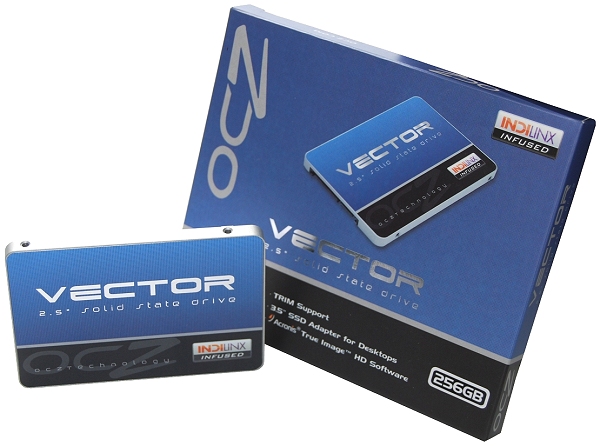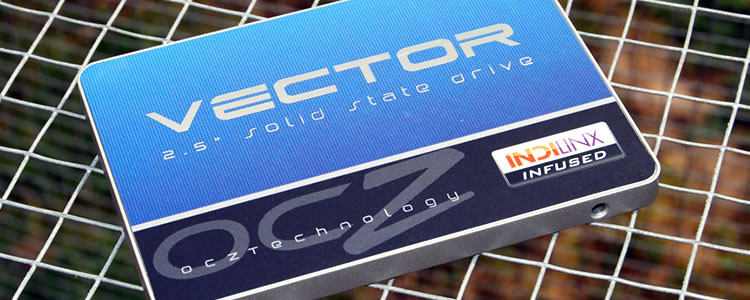Earlier this year we reviewed OCZ's flagship Vertex 4 SSD which at the time we were lead to believe was based on a second-generation Everest controller developed in-house. Having acquired IP and assets from Solid Data in 2010 to expand OCZ's controller and interface portfolio, followed by the acquisition of Indilinx, maker of the renowned Barefoot SSD controller, OCZ was in a good position to start working on their own controllers.
So when OCZ announced the arrival of the Octane SSD series based on the Indilinx Everest controller it seemed fairly plausible, despite the amazingly fast turnaround time. Then OCZ went on to release a second, Indilinx Everest 2-based Vertex 4 just months later. Some started to question how these new controllers were being developed so fast.
Eventually it was revealed and later confirmed by OCZ that the Octane and Vertex 4 drives actually used Marvell controllers, while the firmware was developed in-house by Indilinx (hence the 'Indilinx infused' moniker). That meant these SSDs were using the very same controller driving the Crucial m4 and Intel SSD 510, at least in the case of the Octane anyway.

Needless to say many consumers were not pleased with the deception. While we acknowledged that it was very sneaky on OCZ's behalf, it also didn't change things much for us. Regardless of who did or didn't make the controller, the drives' performance still stood, and in the case of the Vertex 4 that meant it was one of the best performers and best values in the high-end SSD segment.
So with the controversy of the Vertex 4 almost behind them, it appears that OCZ is finally ready to unveil its first truly in-house SSD controller. It's been three years since Indilinx released a brand new controller and they are doing so today with the Barefoot 3, which is to be featured in OCZ's latest SSD series known as Vector.
OCZ Vector SSD
The Vector series is aimed at performance buffs, with initial Indilinx Barefoot 3 based models offering capacities of 128GB, 256GB and 512GB. The drives have a slim 2.5" design, measuring 99.8 x 69.63 x 9.3mm and weighing up to 83 grams.
Power consumption is low compared to conventional hard drives as the Vector uses just 2.25 watts when active and 0.9 watts when in standby mode. While this is less than OCZ's claimed power rating for the Vertex 4, it's more than what Samsung claims for their latest SSD 840 Pro series.

The 128GB model packs read and write speeds of 550MB/s and 400MB/s. Meanwhile, the 256GB and 512GB models feature the same 550MB/s reads, but writes are boosted to 530MB/s. When compared to the Vertex 4 series the read performance is down 10MB/s while the write performance is up 20MB/s.
All Vector models are loaded with 25nm IMFT NAND synchronous flash memory. Our review sample has sixteen 16GB NAND ICs which are labeled OCZ M2502128T048SX22, giving a total capacity of 256GB. Of course, OCZ is not in the business of creating their own NAND flash memory and instead purchases and packages the NAND flash wafers, which they say allows them to pass the cost savings onto their customers. The NAND flash memory is presumably manufactured by Micron.

Once formatted in Windows, the original 256GB is converted to 239GiB, though Windows shows this as 239GB, so it seems like 7% of the original capacity has been lost. With a suggested retail price of $270, the Vector 256GB costs $1.05 per gigabyte, an excellent value for a high-performance SSD.
The Indilinx Barefoot 3 controller features an ARM Cortex processor and is coupled with a 1GB DRAM cache. OCZ used a pair of Micron DDR3-800 512MB chips, one on either side of the PCB.

The Vector SSD series is rated to deliver 20GB of writes per day for 5 years, which equates to a total of 36.5TB's of written data. OCZ also provides a full 5-year warranty with all Vector drives, so that should provide users with some peace of mind.

As a side note, OCZ says that the Barefoot 3 controller has endured a robust and lengthy validation cycle and was distributed to a large network of beta testers. OCZ has talked a lot about quality, which is important when discussing any storage device, and I'm sure they want to move away from the issues caused by the second generation SandForce controller used in the Vertex 3 series.
